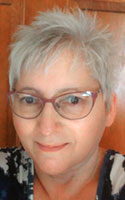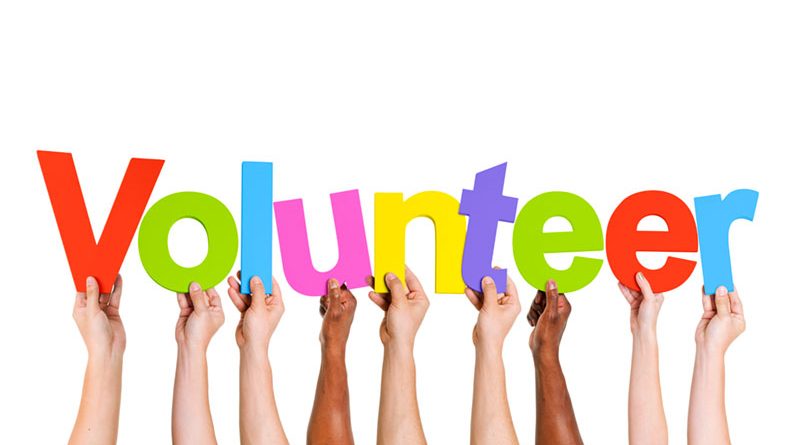The Surprising Benefits for All
Volunteers say they get back as much or more than what they give
By Jana Eisenberg

Volunteering is not just about helping others. For people of every age, there’s always an element of those happy-vibes that come from doing something selfless. Both research studies and anecdotal evidence show that, for older adults, retirees and even people who are sick themselves, volunteering can be an amazing activity to keep feeling well, feeling good and feeling like they are making a difference.
“Through their research, the Corporation for National and Community Service [the federal agency that leads service, volunteering, and grant-making efforts in the United States], has proved that older adults who volunteer tend to be happier, healthier and feel that they are contributing to the good of the community,” said Deb Palumbos. Palumbos is the director of the Retired & Senior Volunteer Program (RSVP) at Lifespan in Rochester, an agency that helps older adults and caregivers address the challenges and opportunities as people are living longer lives.
A lifelong volunteer herself, Palumbos, 63, said that volunteering not only takes into account the needs of those receiving assistance, but also the interests and abilities of those providing their time. Palumbos says that while there are people who have been volunteering with the program for decades, there are always “newbies” — those who are recently retired, and suddenly not sure what do with themselves.
“We want to make sure that each volunteer’s placement is enriching and meaningful to them,” she said. “We work with them to find their passion, and find the right fit. Also, after we’ve recruited and placed volunteers with programs and organizations, we keep in touch to make sure they’re having a good experience. They decide how much time to give, and when. That way, they can pursue their other interests and responsibilities. Volunteering is very personal; we want to make sure that people are happy with it. If they’re not, we work with them to find a better fit.”
Out of around 700 active volunteers at any one time, said Palumbos 10% of them have health issues themselves, some serious. “We have several with end-stage cancer and Parkinson’s — our volunteers with health issues of their own say that it helps them, makes them feel better, less scared, and gets their mind off their own health,” she said.
Before she retired, Donna Peasley, 71, was a librarian. She was also a lifelong volunteer, inspired by her parents, and finding joy in helping others through a wide variety of volunteer activities. Now that she’s been out of the workforce for a while and has experienced health issues herself, she’s still committed to giving her time.
“I always wanted to help others — now that I have more time, I’m doing more,” she said.
What are the benefits?
Peasley ticks them off methodically: “1. If little things are going wrong for me, it helps me keep perspective while helping others who may be worse off. 2. I’m doing something useful. 3. It gets me out of the house. 4. I meet a lot of interesting people; older people with interesting life stories.”
Even while she was still working, she was a financial management volunteer, helping mostly older women with things like balancing checkbooks, budgeting and handling bills. She also did respite care — giving relief to caregivers with a spouse or parent with Alzheimer’s. “With one client — it was a 92-year-old mother and a 70-year-old daughter — I would take the patient out for lunch; she loved to go out for rides, get ice cream,” said Peasley.
She’s done SilverLine, where people sign up to receive a weekly friendly phone call, and though she knew the calls were appreciated, she wasn’t as satisfied with only connecting by phone versus in person.
Tom Null, 66, also likes the personal connection. He started volunteering soon after retiring; his daughter, an employee at Lifespan, suggested that he participate in SilverLine, and from there he graduated to weekly home visits.
He’s says that volunteering is just part of his life. “I try to stay busy. In addition to volunteering, I help friends and neighbors with landscaping and yard work, I am an Uber driver, I belong to a social group that meets a couple of times a week for dinner and maybe dancing,” he said. “Plus, I spend time watching my 8-year-old grandson play with his sports team.”
His current volunteer activities find him visiting a 98-year-old World War II veteran, connecting over their interest in history and reading, and sharing stories and memories. Null’s uncle served in the same conflict, and his mother would have been the same age as his “friend” is now.
“Volunteering gets me outside of myself; I try to give back, and I enjoy doing things for others, especially getting outside and doing that — I’m in in very good health,” Null said. “Talking with the man I visit also brings back memories of my mom. I feel like I’m carrying on the friendship I had with her through him.”
“New York has a pretty low volunteer rate; very few people I know do it,” said Peasley. “I like to be involved with people. And there are so many ways to be of service: you can do paperwork, mend books at the library…”
Lifespan’s Palumbos, whose volunteer activities also include deep involvement in support of area disaster preparedness efforts and veteran and military families, agreed, “Servant leadership is very important. The world is better when we all do something to support one another. At a young age, hearing Dr. Martin Luther King say that anyone can serve struck a chord with me. I did not grow up in a rich family, I believed that I could contribute. It doesn’t matter if you have money or a college education — everybody can give back.”

